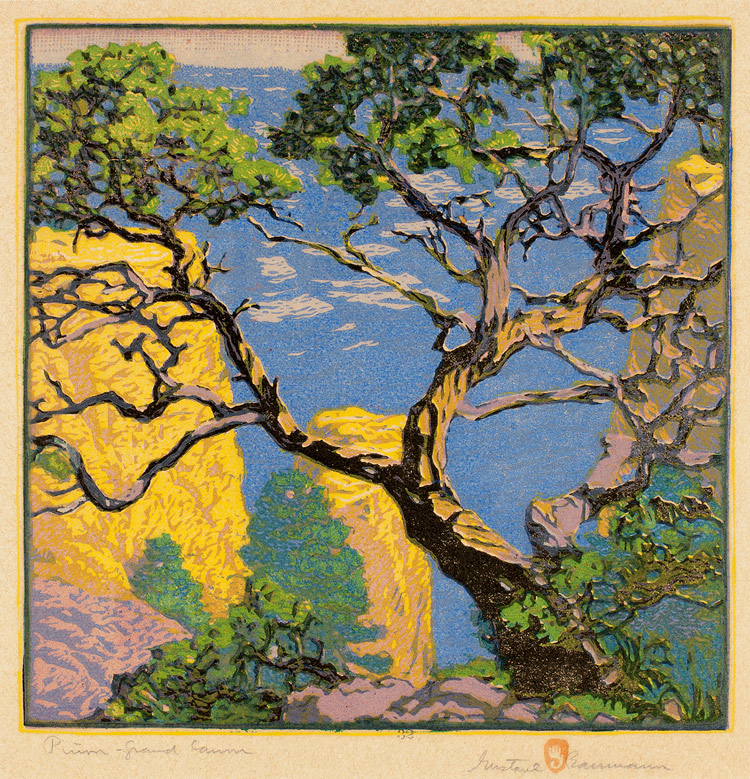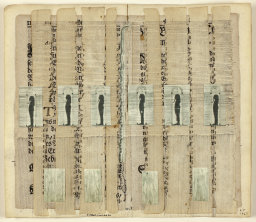
Featuring works on paper from 120 alumni artists, “Homegrown: The School of the Art Institute of Chicago in the Permanent Collection,”shows at the Art Institute of Chicago (AIC) until February 14. The exhibition features artists discovering their style as they go, often trusting intuition and pursuing personal interests to reach a new vision.
Many artists featured in the show respond to the novel environment of Chicago, as Leroy Neiman did with nimble fashion illustrations from his school days. Life’s later periods concern others; 20 self-portraits from Ivan Albright, painted as the artist aged, retain a sense of unknowing as he depicts his looks with signature surreal detail.
A sense of artists arriving at their intentions through the process of making unites the exhibition. “Homegrown” curator and School of the Art Institute of Chicago (SAIC) Printmedia instructor Mark Pascale discusses three of the artists featured in the show who each adopted this openness to discovery, despite their widely varied work.

Gustave Baumann
“Piñon Grand Canyon” and “Bright Angel Trail,” by woodblock printer Gustave Baumann (1881-1971), reveal an intense vision of a landscape lyric at one turn and dramatic at another. “Homegrown” includes a wide selection of Baumann’s work, from early etchings to his well-known portrayals of the American Southwest. The formality in Baumann’s early work makes his bright Western woodblocks’ thrill clear—their grace all the more apparent for their painstakingly carved origins.
Born in Germany, Baumann moved to Chicago at age 10 and began night classes at SAIC at 16 in 1897. Baumann went on to study at the School of Arts and Crafts in Munich, where he discovered the medium of woodblock printing. He ultimately settled in Santa Fe after traveling through the Southwest, where he spent a lifetime rendering the local landscape.
The show highlights Baumann’s innovation in the form of overprinting colors, featuring seven woodblocks employed in the printing of one of his prints, “Apple Blossoms.” Another print, “April,” incorporates aluminum foil as the background for a blooming tree, showing his knack for experimentation and playfulness.
“Homegrown” includes a variety of Baumann’s Christmas cards, calendars, marriage announcements, stationery, and placards hawking woodblock printing to advertisers.
Curator Mark Pascale explained, “During the 1910s, Baumann was working at the Brown County Art Guild, which is a very old artist colony in Nashville, Indiana, sort of similar to Ox-Bow. That work was very much in the realm of an arts and crafts style, as well as being illustrative. He was trying to make a living.” Baumann emerges as an artist who played multiple roles in a way that today’s students might look to in the present job market.

Lenore Tawney
Lenore Tawney’s woven works thrived on taut contradictions, relying on a system of opposing forces organized by obscure internal principles. Her “Drawings in Air” transformed thread to create delicate and easily disrupted yet vital fiber forms. She also worked extensively with collage, and “Homegrown” includes one of these works, “Connoissance” (1967), which features silhouettes of Egyptian pharaohs and two texts on paper resembling papyrus. Tawney constructed the piece freehand, similar to the way that a textile might be constructed using a loom.
Tawney (1907-2007) worked in a fabric factory as a teenager in Loraine, Ohio, before moving to Chicago at age 20, where she attended evening classes at SAIC. Her inspirations included the art historian Helen Gardner, who taught at the school in the 1930s and wrote “Art Through the Ages,” a standard art historical text which can be found at Ryerson Library. Pascale said of Gardner’s approach, “The way that she taught art history was to not separate cultures; they’re written about chronologically, but she did not segregate artists from different cultures.”
Pascale continued: “She took students to the Oriental Institute, where they would see mummies and Assyrian temples. To them, these were artists making a major contribution to the cultural heritage of their societies, and so they were treated with the same respect with which she would treat a named artist from much, much later.”
Tawney often chose text written in languages that she could not speak. When the words in her works were translated, she said, “They would mean just what I had intended.” Pascale commented on this approach: “Whatever your interpretation was, it was just as good as anyone else’s. There’s a wonderful generosity about that spirit, and there’s also a real truthfulness about it.”

Ray Yoshida
Ray Yoshida’s “Eeee!” (1999) presents shreds of landscapes and scenery cut from comic books: a corner of a window, a piece of tiled floor, or a starched collar. Yoshida methodically arranged his cutouts in collages, playing with pattern and grids. A sense of mystery and presences fills the work.
“Homegrown” also includes an early drawing, filled with fuzzy shapes and soft, organic forms. Pascale said, “The early drawing in the show really shows Ray at a turning point.”
Born in Hawaii, Yoshida (1930-2009) studied at the University of Hawaii, but left after being drafted into the Army during the Korean War. He received his BFA from SAIC in 1953, going on to teach at SAIC for four decades.
Yoshida served as an important mentor to the Hairy Who and the Chicago Imagists, a group who specialized in distorted, representational art in the 1960s and ‘70s. “Homegrown” features the work of fellow Chicago Imagists Roger Brown, Christina Ramberg, and Ed Paschke.
Pascale explained Yoshida’s influence on the group, “He was certainly an important mentor to them and a very good friend to all of them. They weren’t a club; they were all individual artists who had their own ideas. They just happened to exhibit together once or twice. At any rate, if you think about people who revere Ray, and still revere him, there’s quite a wide range of students.”
Pascale said of Yoshida’s sensibility, “He had a really great eye for design, for intention, and for ideas. He was also unrelenting in his criticism. You never got away with anything with him. In a way, it meant he cared, even if it was negative, which is something hard for young students to understand.”
“Ray was quite slight, but he had a big personality,” Pascale said. “He had a very elegant way of being in the world.”







